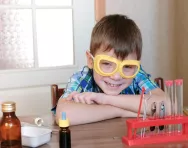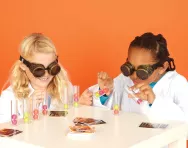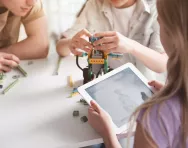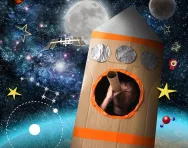Important update from TheSchoolRun
For the past 13 years, TheSchoolRun has been run by a small team of mums working from home, dedicated to providing quality educational resources to primary school parents. Unfortunately, rising supplier costs and falling revenue have made it impossible for us to continue operating, and we’ve had to make the difficult decision to close. The good news: We’ve arranged for another educational provider to take over many of our resources. These will be hosted on a new portal, where the content will be updated and expanded to support your child’s learning.
What this means for subscribers:
- Your subscription is still active, and for now, you can keep using the website as normal — just log in with your usual details to access all our articles and resources*.
- In a few months, all resources will move to the new portal. You’ll continue to have access there until your subscription ends. We’ll send you full details nearer the time.
- As a thank you for your support, we’ll also be sending you 16 primary school eBooks (worth £108.84) to download and keep.
A few changes to be aware of:
- The Learning Journey weekly email has ended, but your child’s plan will still be updated on your dashboard each Monday. Just log in to see the recommended worksheets.
- The 11+ weekly emails have now ended. We sent you all the remaining emails in the series at the end of March — please check your inbox (and spam folder) if you haven’t seen them. You can also follow the full programme here: 11+ Learning Journey.
If you have any questions, please contact us at [email protected]. Thank you for being part of our journey it’s been a privilege to support your family’s learning.
*If you need to reset your password, it will still work as usual. Please check your spam folder if the reset email doesn’t appear in your inbox.
No-budget STEM fun at home

What equipment comes to mind when you think of STEM education? Perhaps it conjures up images of computers, robotics kits, 3D printers … Expensive technology, and certainly not the kinds of things many of us have access to.
However, STEM doesn’t have to blow the budget. STEM can also mean cardboard tubes, carrier bags, silver foil, plastic bottles or lolly sticks.
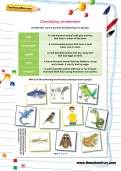
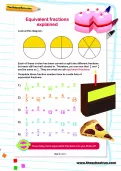
Download fantastic science resources today!
- Experiments And Science Fun pack
- Science Learning Programme for each school year
- All the instructions, questions and information you need
Emily Hunt, primary school teacher and author of the 15-Minute STEM series, shares her top three everyday items for STEM fun, and three quick, creative STEM activities you can do with each of them. Time to raid the recycling bin...
STEM fun essential: cardboard
Cardboard boxes are the start of many a great STEM project. Whether it’s cutting out cardboard wings for a bottle rocket or creating a cardboard base for a house, it’s always worth having a pile of cardboard to hand. Why not try:
1. RAMP RACING
Cut a rectangle out of a large piece of cardboard, then use it to create a ramp for a toy car to travel down. What is the furthest distance you can get the car to travel? Think carefully about the height of the ramp and the surface of the floor underneath the ramp. (To expand this activity, see 15-Minute STEM Book 2.)
2. CARDBOARD ARCHITECTURE
Challenge your child to recreate famous architectural structures out of cardboard tubes and boxes. Good examples to try include the Parthenon or the Eiffel Tower (no pressure!).
3. PING PONG BALL RUN
Cut cardboard tubes in half lengthways and attach them to a vertical surface, such as a door, with sticky tape. Each tube should be tilting down slightly towards the next. See if you can create a run that takes the ping pong ball exactly 10 seconds to travel from the top to the bottom.
STEM fun essential: glass jars
Empty glass jars are one of the most common items in our recycle bins. After a quick wash, these jars can be repurposed for use in exciting STEM activities. Clear jars work particularly well.
1. WATER XYLOPHONES
Take five glass jars and fill each one with a different amount of water. Tap the side of each jar with a stick to hear the sound it creates. See if you can play a tune on your water xylophone!
2. FROZEN FIREWORKS
Part fill a glass jar with warm water, leaving space at the top. Add a two-centimetre layer of vegetable oil. You will notice that the oil floats on the top of the water. Place ice cubes made of frozen water and food colouring into the jar. Watch as the ice melts and the coloured droplets sink down into the water and mix together, creating "fireworks"!
3. RAINBOW WALKING WATER
Place three glass jars in a row and fill the outer two with water. Add a drop of food colouring to one of the outer glasses, and a drop of a different colour in the other. Then take two paper towels and fold each one lengthways. Place one end of each towel in the coloured water and the other in the empty middle glass. Observe your experiment over time to see the water "walking" across the paper towels! (For more details, see 15-Minute STEM.)
STEM fun essential: lolly sticks
Wooden lolly sticks make a great construction material for STEM projects. Here are three ways that you can use them.
1. BRILLIANT BRIDGES
Think about the bridges that you have seen. What do they look like? What are they made of? How are they designed? Use lolly sticks to create a bridge that will span a 30-centimetre gap. This could be between two tables or chairs of the same height. Use glue or sticky tape to attach the lolly sticks together, then test your bridge by using toy cars to see how much weight it can hold.
2. TILTING MARBLE MAZE
Take an upside-down shoebox lid and use lolly sticks to create maze ramps and bumpers, attaching them using sticky tape. Test your marble maze by tilting the shoebox with your hands to navigate the marble around the maze.
3. HURRICANE HOUSES
Try to build a hurricane-proof house, using lolly sticks to create a frame and plasticine or sticky tape to join it together. Check that your house is secure in preparation for "high winds". Then place your house in front of a fan or hairdryer – one metre away – and turn it on. If it withstands the winds, start moving the fan forward in 10-centimetre increments to test how hurricane-proof your house is. (For more details, see 15-Minute STEM Book 2).
Emily Hunt is a primary school teacher and the author of the 15-Minute STEM series. Her latest book, 15-Minute STEM Book 2, is now available. Follow her on Twitter at @HowtoSTEM.




